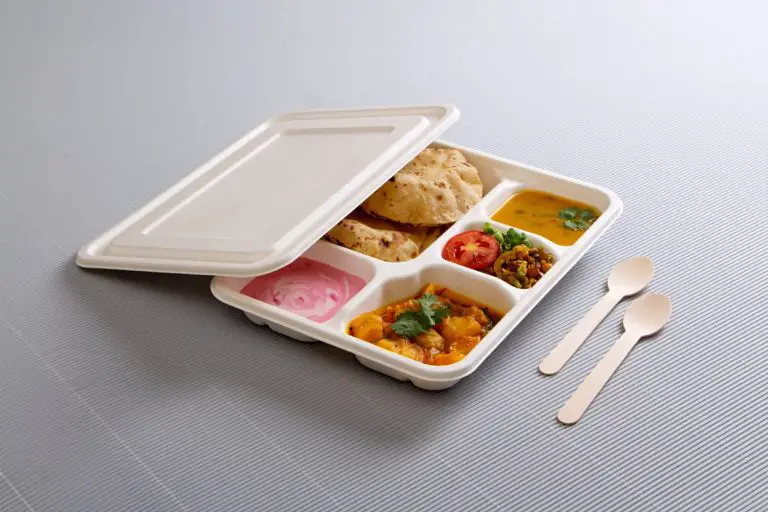
As more households embrace sustainable living, the need for eco-friendly dining solutions has never been greater. Sugarcane bagasse tableware offers a biodegradable and compostable alternative to traditional plastic disposables. But how can you effectively compost these products at home? This comprehensive guide will walk you through the process, ensuring you can enjoy the benefits of sugarcane bagasse tableware while minimizing your environmental footprint.
- Understanding Sugarcane Bagasse Tableware
Before diving into the composting process, it’s essential to understand what sugarcane bagasse tableware is and why it’s an excellent choice for eco-conscious consumers. Bagasse is the fibrous residue left after extracting juice from sugarcane. This by-product is repurposed into durable, eco-friendly tableware that is both biodegradable and compostable.
- Benefits of Composting Sugarcane Bagasse Tableware
Composting sugarcane bagasse tableware at home offers numerous benefits:
- Reduces Waste: Diverts biodegradable waste from landfills.
- Enriches Soil: Produces nutrient-rich compost that enhances soil health.
- Supports Sustainability: Encourages a circular economy by returning organic matter to the earth.
- Getting Started: What You Need
To begin composting sugarcane bagasse tableware, you’ll need:
- Compost Bin or Pile: An outdoor compost bin or a designated compost pile in your garden.
- Green Materials: Nitrogen-rich materials like vegetable scraps, coffee grounds, and grass clippings.
- Brown Materials: Carbon-rich materials like dried leaves, straw, and paper.
- Water: To maintain the right moisture level.
- Preparing Sugarcane Bagasse Tableware for Composting
Not all sugarcane bagasse tableware can be composted directly. Here’s how to prepare it:
- Clean: Rinse off any food residue to prevent attracting pests.
- Shred: Break down larger items like plates and bowls into smaller pieces to speed up decomposition.
- Building Your Compost Pile
Creating a balanced compost pile is crucial for efficient decomposition. Follow these steps:
- Layering: Start with a layer of coarse materials (twigs, straw) to aid aeration.
- Add Browns and Greens: Alternate layers of brown materials (carbon-rich) and green materials (nitrogen-rich). Aim for a ratio of about 3:1 (browns to greens).
- Incorporate Bagasse Tableware: Add shredded sugarcane bagasse tableware to the brown layers.
- Maintaining Your Compost Pile
Proper maintenance is key to successful composting:
- Aerate: Turn the compost pile regularly (every 1-2 weeks) to introduce oxygen and speed up decomposition.
- Moisture: Keep the compost moist but not waterlogged. It should feel like a wrung-out sponge.
- Balance: Monitor the balance of greens and browns to avoid foul odors or slow decomposition.
- Troubleshooting Common Issues
Composting is straightforward, but issues can arise:
- Odors: If your compost smells, it may be too wet or contain too many greens. Add more browns and aerate.
- Slow Decomposition: Lack of nitrogen or poor aeration can slow the process. Add greens and turn the pile.
- Pests: Food scraps can attract pests. Bury them deeper in the pile and avoid adding meat or dairy.
- Harvesting Your Compost
Depending on conditions, composting sugarcane bagasse tableware can take several months. You’ll know your compost is ready when:
- Appearance: It’s dark, crumbly, and soil-like.
- Smell: It has an earthy odor.
- Consistency: There are no recognizable pieces of bagasse tableware or other materials.
- Using Your Finished Compost
Once your compost is ready, it’s time to put it to good use:
- Gardens: Enrich garden beds with compost to improve soil structure and fertility.
- Lawns: Spread a thin layer over your lawn to promote healthy grass growth.
- Potted Plants: Mix compost into potting soil to boost nutrient content for indoor and outdoor plants.
- Embracing a Sustainable Lifestyle
Composting sugarcane bagasse tableware is a small but impactful step towards a sustainable lifestyle. By transforming waste into valuable compost, you contribute to reducing landfill waste and enriching the earth. Plus, it’s a rewarding way to close the loop on your eco-friendly dining habits.
Conclusion: Composting for a Greener Future
Composting sugarcane bagasse tableware at home is an accessible and beneficial practice for anyone looking to reduce their environmental footprint. With the right approach, you can turn biodegradable tableware into nutrient-rich compost, supporting a healthier planet and more sustainable living. Embrace the journey of composting and make every meal a step towards a greener future with sugarcane bagasse tableware.




